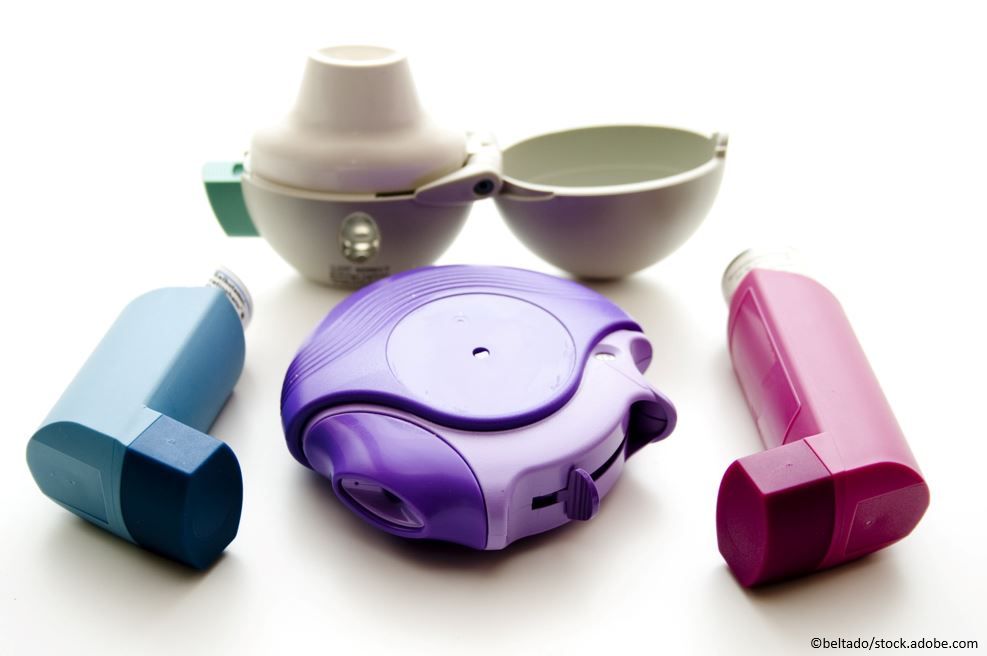- Clinical Technology
- Adult Immunization
- Hepatology
- Pediatric Immunization
- Screening
- Psychiatry
- Allergy
- Women's Health
- Cardiology
- Pediatrics
- Dermatology
- Endocrinology
- Pain Management
- Gastroenterology
- Infectious Disease
- Obesity Medicine
- Rheumatology
- Nephrology
- Neurology
- Pulmonology
Boehringer Ingelheim Will Cap Out of Pocket Costs for Inhalers at $35 per Month
The monthly out of pocket cap applies to all BI inhalers and goes into effect on June 1, 2024.
©beltado/stock.adobe.com

Pharmaceutical manufacturer Boehringer Ingelheim has announced a $35 per month cap on out-of-pocket costs all of the company’s inhaler products at $35 per month for eligible patients, according to a news release.1 The program will “dramatically reduce costs at the pharmacy counter” for patients who are under- or uninsured.
The out-of-pocket cost cap will go into effect on June 1, 2024 and will cover the following inhalers1:
- Ipratropium bromide HFA (Atrovent HFA) inhalation aerosol
- Ipratropium bormide and albuterol (Combivent Respimat) inhalation spray
- Spiriva HandiHaler (tiotropium bromide inhalation powder)
- Spiriva Respimat 1.25 mcg (tiotropium bromide) Inhalation Spray
- Spiriva Respimat 2.5 mcg (tiotropium bromide) Inhalation Spray
- Stiolto Respimat (tiotropium bromide and olodaterol) Inhalation Spray
- Striverdi Respimat (olodaterol) Inhalation Spray
“The US health care system is complex and often doesn’t work for patients, especially the most vulnerable,” said company president and CEO Jean-Michael Boers, in the BI announcement.1 “While we can’t fix the entire system alone, we are bringing forward a solution to make it fairer. We want to do our part to help patients living with COPD or asthma who struggle to pay for their medications.”1
According to the Asthma and Allergy Foundation of America, prices of inhaled asthma medications have increased approximately 50% since 2009, representing a significant financial burden and creating barriers to continued treatment.2
Approximately 24 million individuals in the United States are living with asthma, according to the Allergy and Asthma Network.3 More than 11 million Americans live with chronic obstructive pulmonary disease (COPD), and an additional 12 to 14 million may have COPD but not know it.3
Among adults aged 45 years and older with COPD, annual medical costs of the disease reach $24 billion, including $11.9 billion in prescription medication costs.4 Another $6.3 billion is spent on inpatient treatment, and $900 million is spent on use of emergency department services.4 Individuals with COPD can accrue average annual medical costs of $4322; between 2000 and 2018, the cost of prescription drugs alone increased 8-fold.4
Asthma also represents a significant financial burden: between 2001 and 2011, the number of individuals living with asthma increased by 28%, with a 6% increase in associated costs between 2002 and 2007—$53 billion to $56 billion—and direct costs per person, per year are estimated to be $3259.2
According to the Asthma and Allergy Foundation of America, 16% of those with asthma report high health care costs, spending more than 10% of their income for out-of-pocket expenses. These individuals were also the most likely to not continue receiving treatment.
References
Boehringer Ingelheim caps patient out-of-pocket costs for its inhaler portfolio at $35 per month. News release. Boehringer Ingelheim. March 7, 2024. Accessed March 7, 2024. https://www.boehringer-ingelheim.com/us/press-releases/boehringer-ingelheim-caps-patient-out-of-pocket-costs-inhaler-portfolio
Cost of asthma on society. Asthma and Allergy Foundation of America. Accessed March 7, 2024. https://aafa.org/advocacy/key-issues/access-to-health-care/cost-of-asthma-on-society/
When asthma meets COPD. Allergy and Asthma Network. Accessed March 7, 2024. https://allergyasthmanetwork.org/news/when-asthma-meets-copd
COPD trends brief: burden. American Lung Association. Accessed March 7, 2024. https://www.lung.org/research/trends-in-lung-disease/copd-trends-brief/copd-burden
